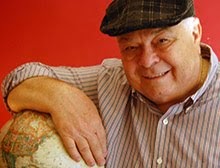 |
| The mysterious Northern Lights are a highlight of a winter trip to Finland (wikipedia) |
FINLAND –
If ever there was a season suited to one
nationality, it would have to be winter in Finland.
 |
| Nobody loves winter more than the Finns (wikipedia) |
Finns
greet the first snowflakes of winter with eager anticipation where Mother
Nature turns an entire country into a crystalline playground filled with
exhilarating activities.
No
sport represents the Finnish passion for winter more than cross country skiing.
Even today, the Finn’s love of their woodlands and lakes is deeply rooted in
their rural heritage. Skis have evolved from a primary means of transportation
to the most popular source of recreation
Outdoor
loving travelers with an appetite for exercise can do cross country hut-to-hut ski
tours by trekking through pristine nature, through snow laden forests and
across frozen lakes.
Hut-to-hut
tours feature rustic accommodations, sometimes with no electricity. On the
other hand, you’re in Finland,
which means no amount of rusticity ever goes without a sauna at every location.
 |
| Ski trekking and cross country skiing are popular winter activities (wikipedia) |
While
much of Finland
is relatively flat, all the familiar winter activities are available with plenty
of opportunities to hit the slopes for downhill or alpine skiing. Just below
the Arctic Circle in Kuusamo, Mt.
Ruka is one of the most
popular spots in the country for traditional ski experiences.
Telemark
skiing is another favorite. Perhaps the best way to describe it is that it’s like
doing cross country skiing on downhill terrain. Like other forms of the sport,
telemark is challenging because it demands stamina combined with rhythm,
coordination and balance in order to derive maximum pleasure from skimming
across soufflés of powdery white snow.
 |
| Hardy travelers can do winter swimming (wikipedia) |
Much
of the fun of Finland
in winter however, is leaving traditional enterprises behind to find bold adventures
unlike anywhere else in the world. It is here that Finnish creativity has no
peer.
Each
year in February, the Finlandia Ski Race attracts nearly 10,000 participants
from around the world for a marathon on skis. Beginning at the Lahti Ski Center about two hours northeast of Helsinki, this test of speed and endurance features
two major competitions. The first is a 20-mile race followed by the main event
which is 47-miles long. For some the race represents a commitment to a healthy
lifestyle, but for most the ultimate goal is to simply cross the “Finnish line.”
 |
| The Finlandia Ski Race attracts thousands of people each year in February (wikipedia) |
How
about reindeer skiing which is popular in Lapland?
Just hook a bridle and tow-rope to your favorite reindeer and race across the
tundra at breakneck speed.
 |
| Ice hotels are very popular throughout Scandinavia -- Some even have churches sculpted from ice (wikipedia) |
Lapland is also home to annual reindeer round-ups. Just as bison were integral
to the lives of native Americans in the western United States for food, shelter and
clothing, so too, are reindeer for the Lapps. Round-ups allow visitors to
participate in herding reindeer, often by helicopter, as the animals are
separated for breeding, slaughter, being returned to their owners or released
back into the wild.
Throughout
the dark-shortened days of winter in Finland ice sculpture contests are
a popular diversion in many small villages.
Just
because temperatures are freezing and summer has long been forgotten or is too
far in the future to dream about, does not mean that Finns don’t remember the
range of activities that await after the snow melts.
 |
| How about a round of snow golf. Play with orange balls or wait til spring when the snow melts (wikipedia) |
Ever
heard of snow golf? The “greens” become “whites” and the balls are orange so
you can find them, but a little snow will never keep a Finnish duffer from his appointed
rounds.
How
about fishing? After all, the fish are still under that frozen water. Drill a
hole, set up a stool, get a hot glass of cider, drop a line and you’re in
business.
There
is horse racing too. The trotters at Vermo run all year long.
For
members of the Polar Bear Club, why not compete in a winter swim meet. A regulation
pool is chiseled out of the ice and all the events are just like summer; breast
stroke, butterfly, backstroke and freestyle.
 |
| Try dog sledding for an outing into pristine wilderness (Taylor) |
Many
travelers find cruising relaxing. So do the Finns. That’s why they offer ice-breaker
cruises more than half of the year. The best known and most popular is aboard
the Sampo, a retired government ice-breaker that takes travelers out to chop up
the ice. Sampo sails out of the seaport city of Kemi. During the tour, participants are
allowed to outfit themselves in brightly colored wetsuits and go for a dip in
the Gulf of Bothnia.
 |
| Snowmobiling is also a favorite activity (wikipedia) |
Summer
has the midnight sun, but even that cannot compete with the Aurora Borealis or
Northern lights of winter. When conditions are exactly right, another
phenomenon known as the “blue-moment” occurs just before sunset when eerie
shades of blue envelop the surroundings to create an alien-like atmosphere.
Of
course there’s always sledding, skating and campfire cookouts..
 |
| When the day is done head for the sauna -- Saunas are Finland's national pastime (wikipedia) |
Whatever
your interests, be they offbeat, traditional, adventure or something in
between, Finland
welcomes visitors to the wonders of winter. The Finns call it “snow-how”
because in Finland,
there’s no business like “snow” business.





















































